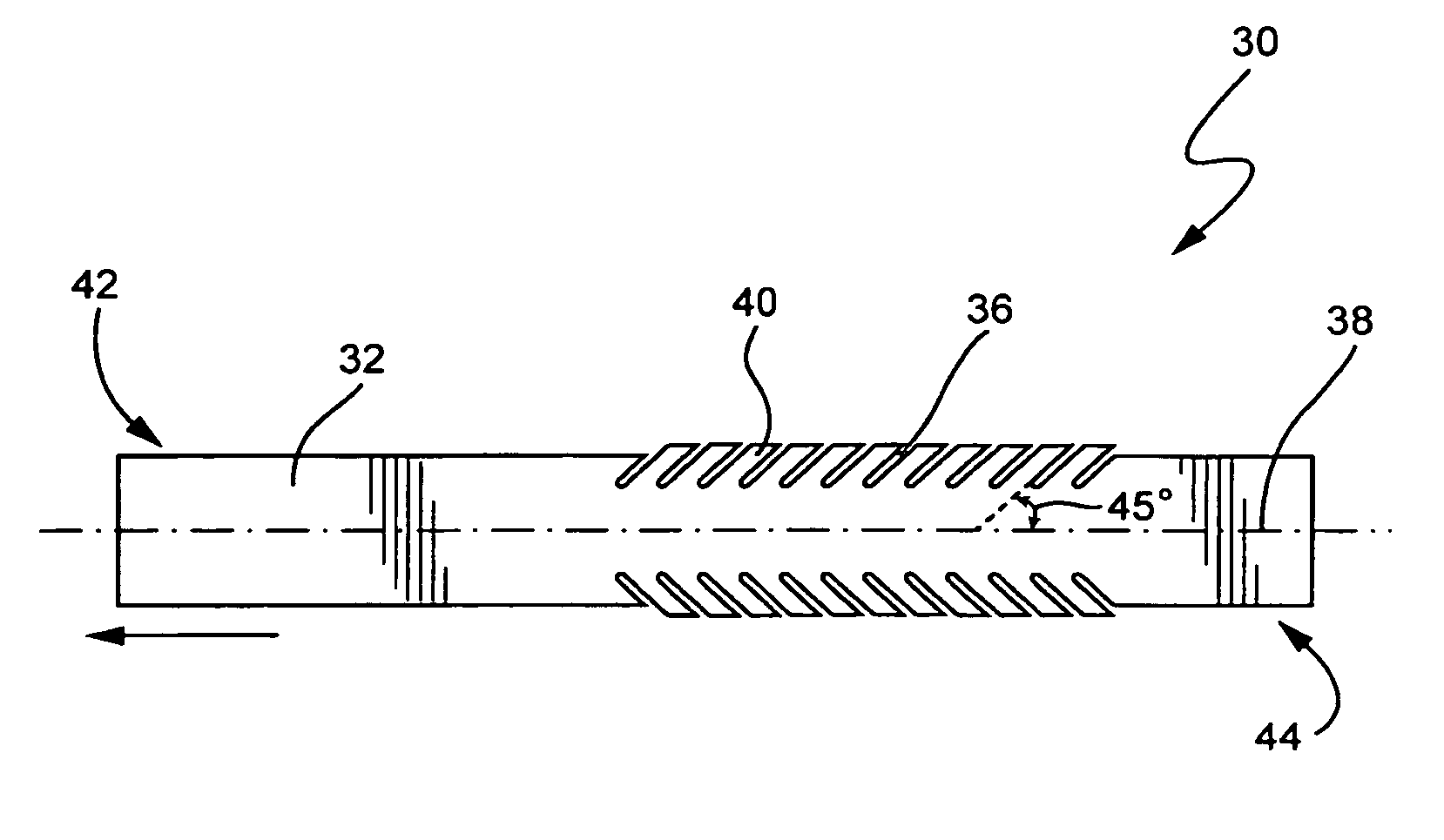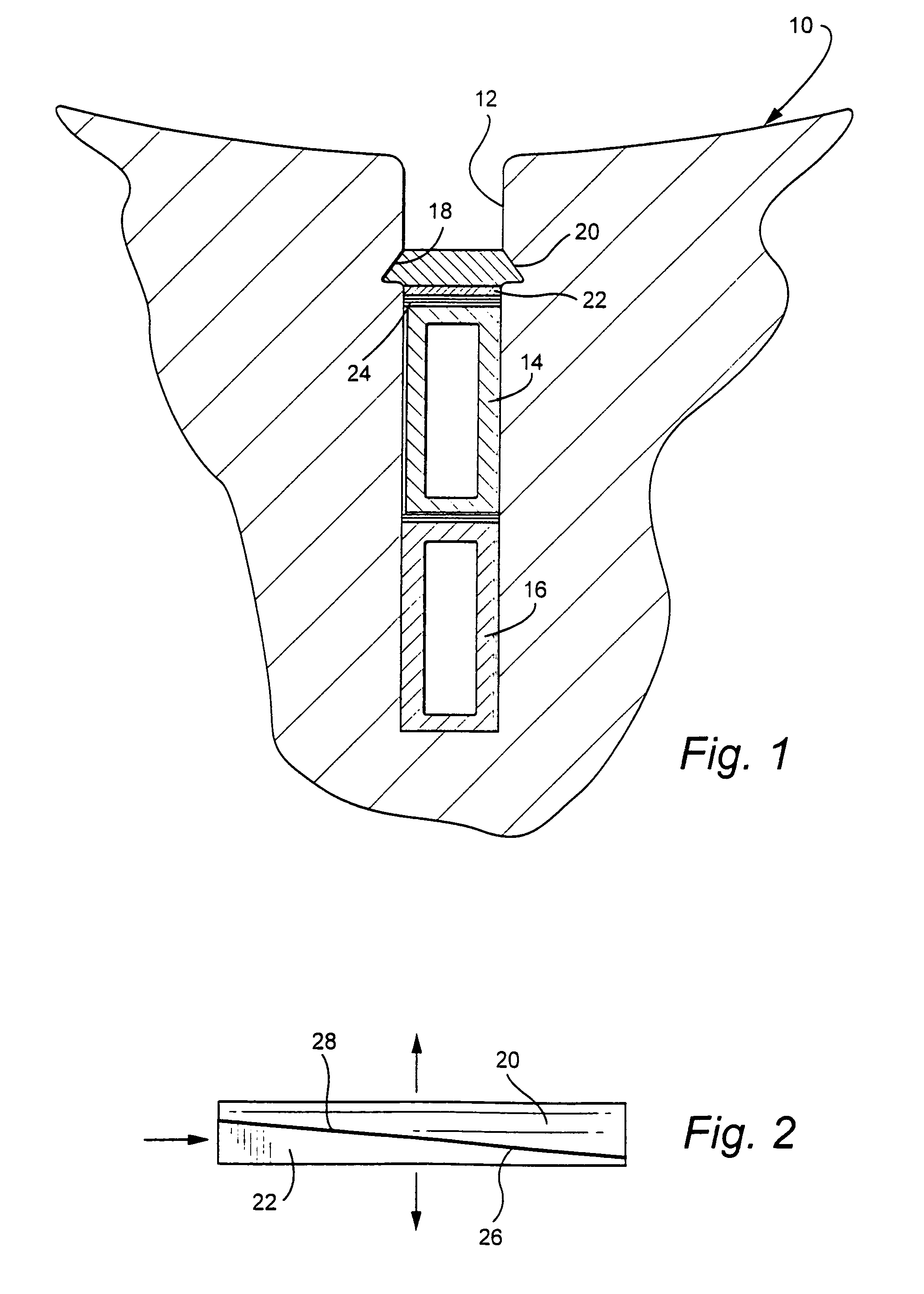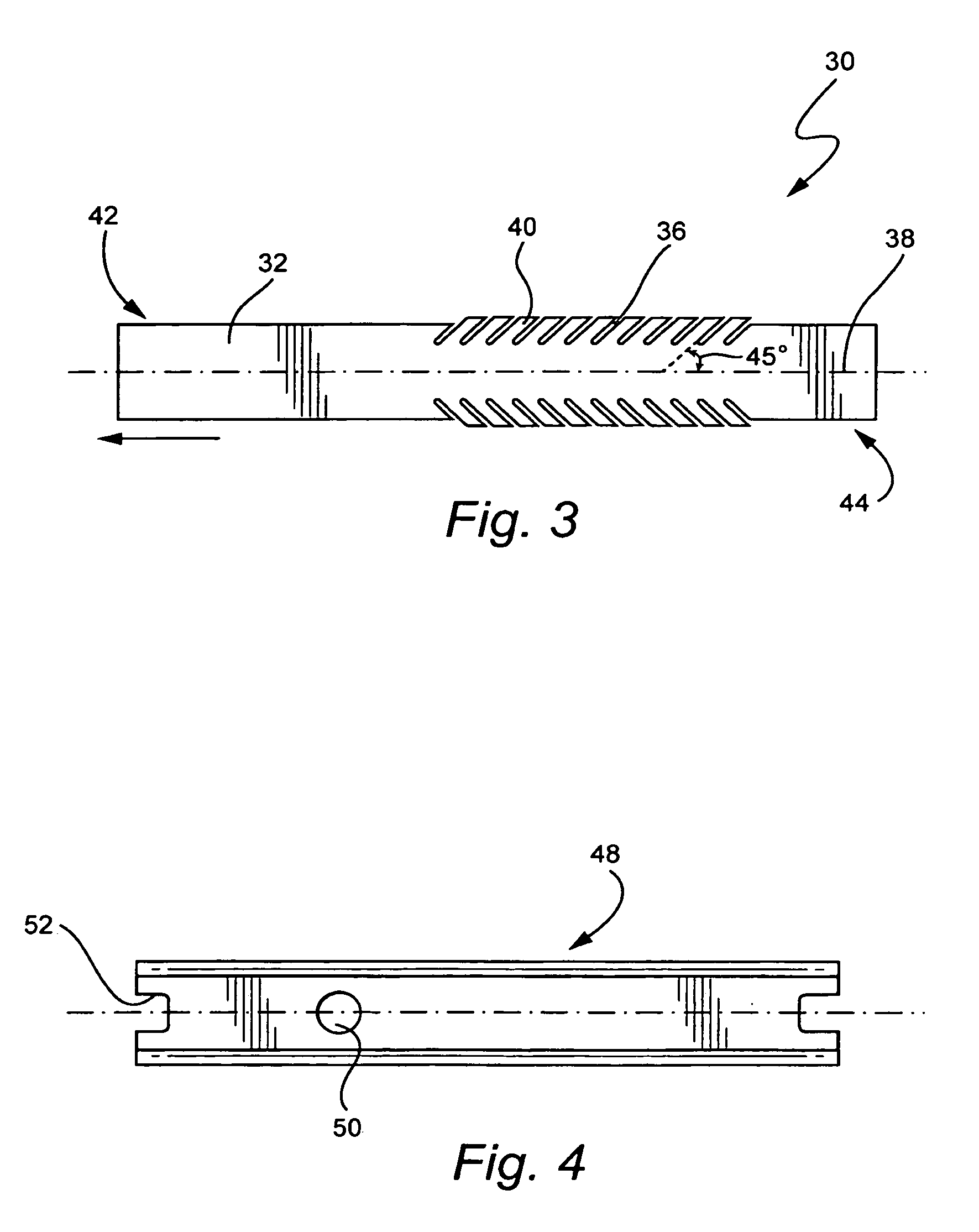Re-tightenable stator body wedge system
a stator body and wedge technology, applied in the direction of dynamo-electric machines, electrical equipment, magnetic circuit shapes/forms/construction, etc., can solve the problems of loss of radial force on the armature bars, and achieve the effect of shortening outage cycles and simplifying inspection processes
- Summary
- Abstract
- Description
- Claims
- Application Information
AI Technical Summary
Benefits of technology
Problems solved by technology
Method used
Image
Examples
Embodiment Construction
[0020]Referring initially to FIG. 1, the generator stator core is partially shown at 10, it being understood that the core includes a plurality of radial slots 12 which extend axially along the core and which receive stator windings 14, 16. Each slot 12 is formed adjacent its mouth with dovetail grooves or undercuts 18 permitting wedge and slide components 20, 22 to be inserted in an axial direction within a slot. If needed, one or more filler strips 24 may be inserted in conventional fashion between the winding 14 and slide 22. Note that, relative to the slot 12, the slide 30 is radially inward of the wedge 48.
[0021]FIG. 2 illustrates the manner in which flat sloped surface 26, 28 on conventional wedge and slide components 20, 22 cooperate to apply radial force on the stator bars as the slide component is driven under the wedge in a conventional stator winding wedge system.
[0022]Turning to FIG. 3, the new slide component 30 in accordance with an exemplary embodiment of this inventi...
PUM
 Login to View More
Login to View More Abstract
Description
Claims
Application Information
 Login to View More
Login to View More - R&D
- Intellectual Property
- Life Sciences
- Materials
- Tech Scout
- Unparalleled Data Quality
- Higher Quality Content
- 60% Fewer Hallucinations
Browse by: Latest US Patents, China's latest patents, Technical Efficacy Thesaurus, Application Domain, Technology Topic, Popular Technical Reports.
© 2025 PatSnap. All rights reserved.Legal|Privacy policy|Modern Slavery Act Transparency Statement|Sitemap|About US| Contact US: help@patsnap.com



